There can be your advertisement
300x150
Apartment Relocation: What You Cannot Do
We turned to a professional lawyer to get all the information on this important matter in the simplest and most accessible way
Often, when starting a renovation, we rely only on a beautiful picture of the result we want to achieve. All the boring questions about combining bathrooms, demolishing walls, and expanding corridors we tend to leave to professionals who, unfortunately, are not always such.
Yet when disagreements with neighbors arise or when selling the apartment, we end up with a lot of annoying problems.
To avoid these issues, we asked the expert to explain what you need to know first about apartment relocation.
Eduard Akopyan, expert-legal consultant, 26 years old, has been advising on real estate issues
Why is it necessary to legalize apartment relocation?
For example, you bought an apartment with a relocation or an apartment in a new building with a "free layout" and did an expensive renovation. You implemented the most daring design ideas. It seems like you can just live and be happy.
However, one neighbor's complaint or a management company's report to the housing inspection can bring a commission right to your door. In the worst (and unfortunately frequent) case, the result of such an inspection is an act with a directive to restore the unauthorized layout in compliance with the original BTI plan (Bureau of Technical Inventory). The deadline for all work is three months.
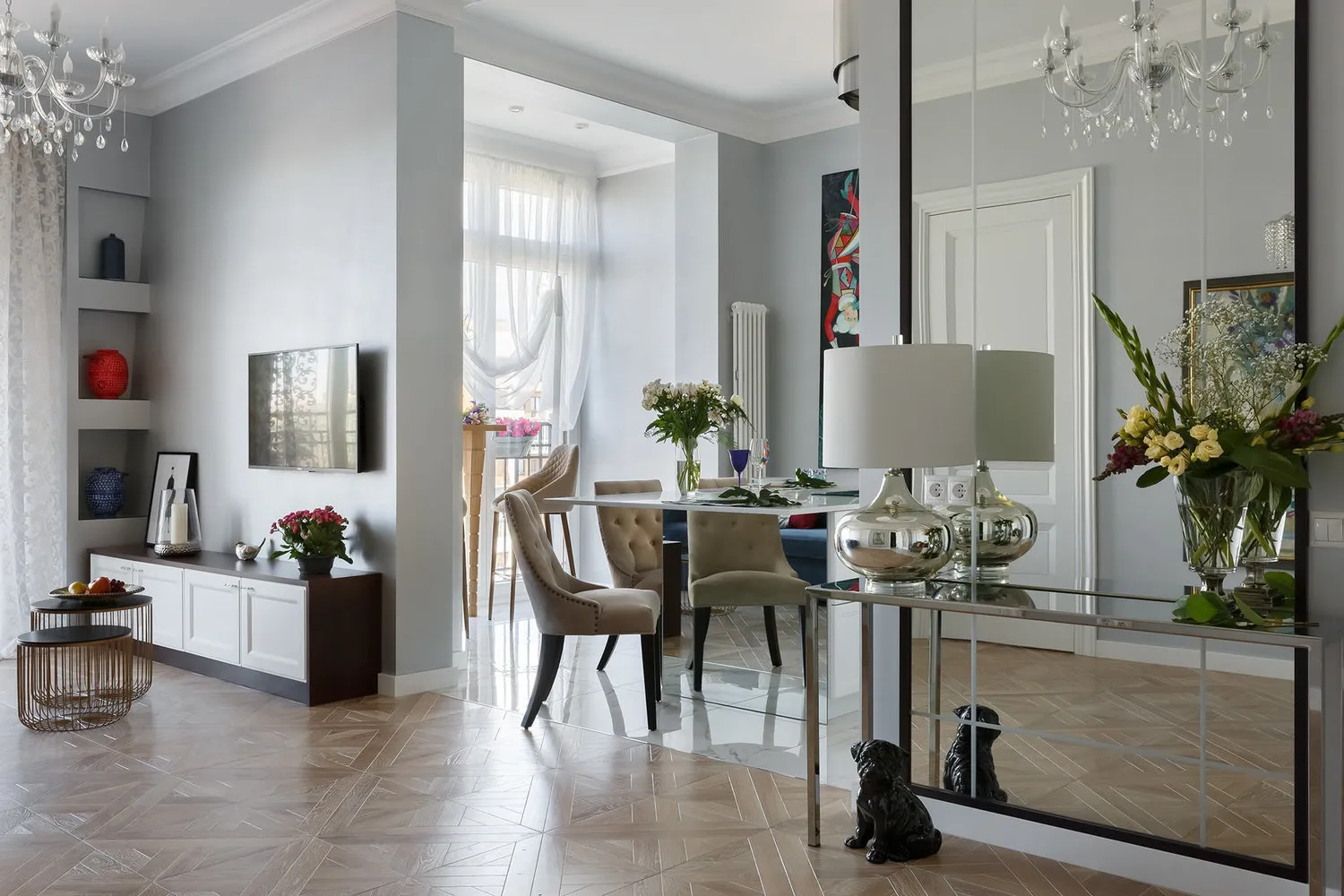
Design: Inna Azorskaia
As a result — instead of domestic tranquility, you get large bills for rework plus fines, and spend nerves, time... constant inconvenience.
In addition, if you decide to sell the apartment in the future with an unauthorized relocation, keep in mind that its price will be at least 10% lower than the market rate.
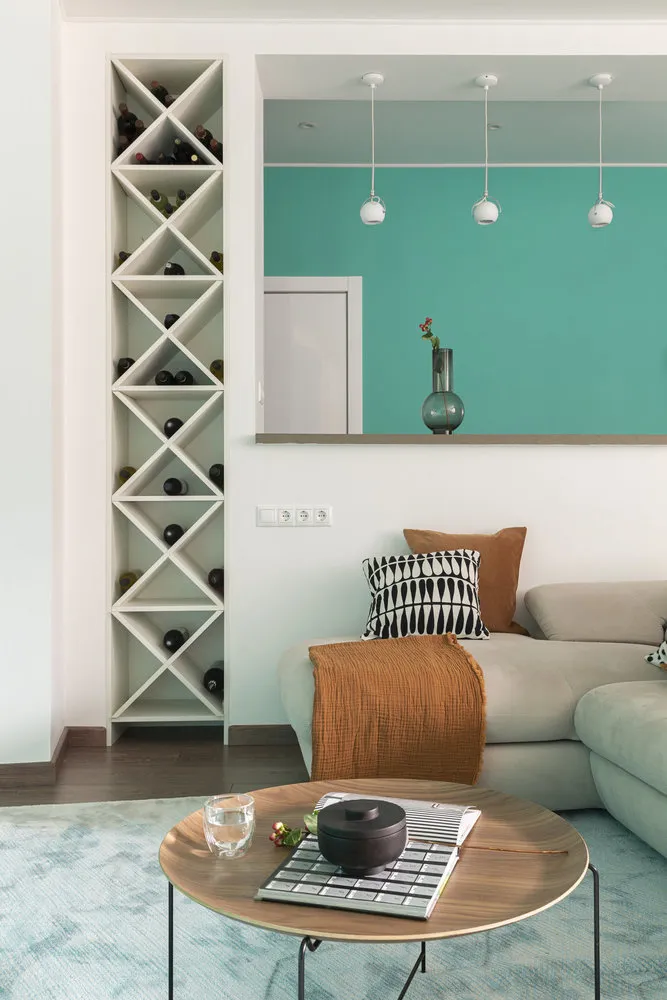
Design: Natalia Vasilieva
If you still took a risk and did the renovation at your own risk, I recommend consulting professionals and conducting a site relocation expert assessment.
This will allow you to understand whether it's possible to legalize the existing relocation of your apartment in the future.
Who and what is allowed
According to the law, manipulating with major wall relocation and functional zones is only available to owners of apartments on the first and last floors of a multi-apartment building. Here's what they are allowed to do:
on the first floors- expand the bathroom at the expense of the kitchen;
- expand the kitchen at the expense of a living room (if the kitchen has an electric stove);
- expand the bathroom at the expense of a living area;
- completely relocate the kitchen to the place of the living room provided that there are two or more rooms in the apartment (if the kitchen has an electric stove).
on the last floors
- expand the kitchen at the expense of the bathroom;
- expand the living room at the expense of the bathroom;
- expand the living room at the expense of the kitchen;
- move the kitchen to auxiliary space (corridor/storage) and agree on placing the living room where the kitchen used to be.
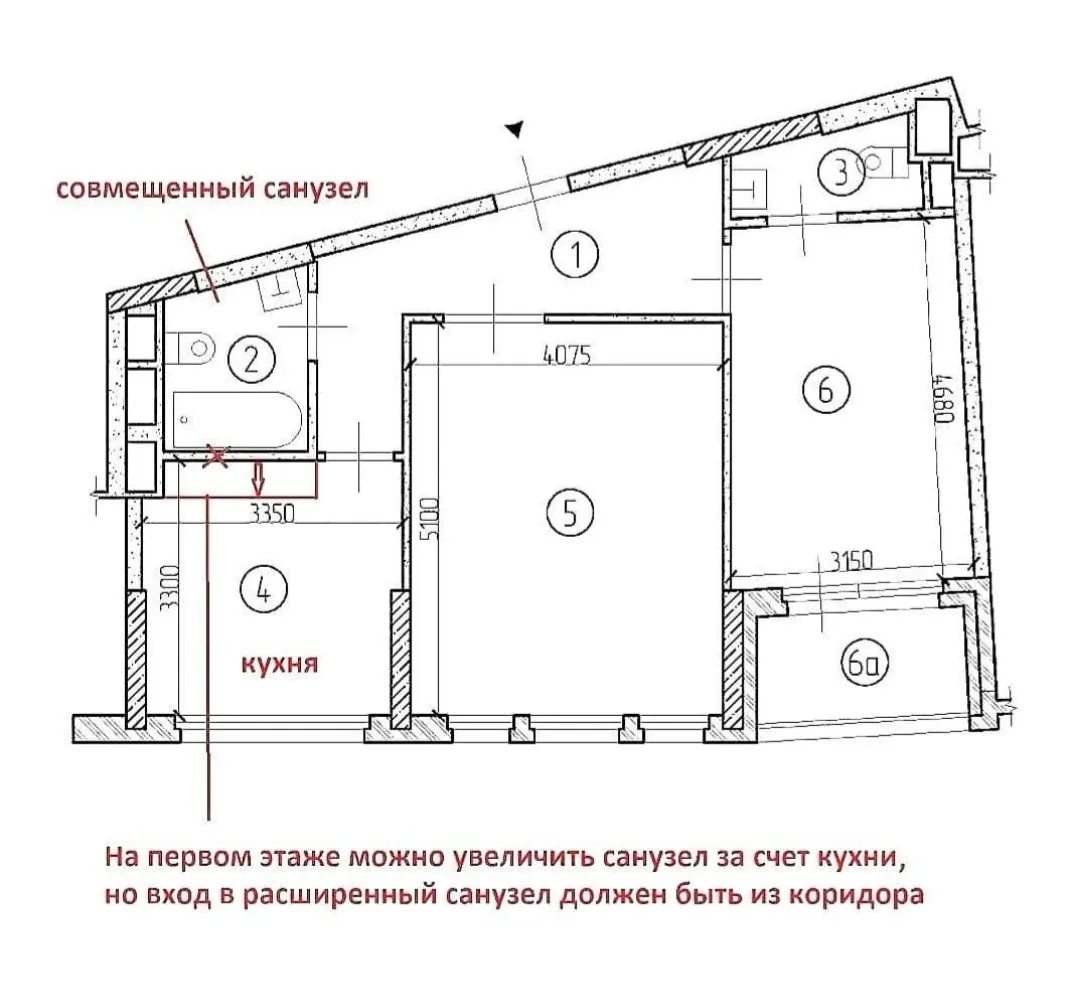
What is forbidden
- demolishing load-bearing walls or columns;
- making openings in load-bearing walls wider than 120 cm;
- demolishing or reducing common house pipes and ventilation shafts;
- tightly sealing heating pipes;
- extending the radiator onto the balcony;
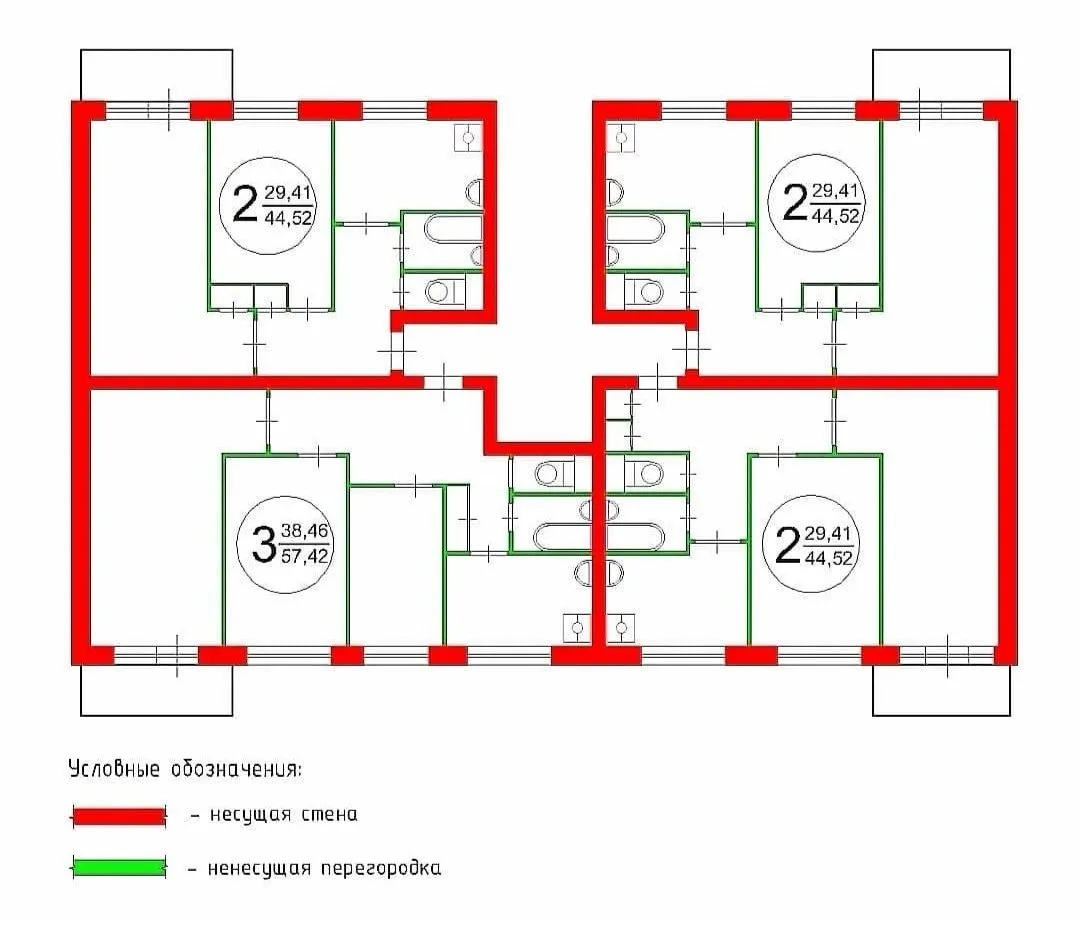
- installing a trap in the bathroom;
- installing water-based heated floors;
- removing thresholds in the bathroom.

- expanding the kitchen at the expense of the bathroom;
- expanding the bathroom at the expense of the kitchen or living room (however, it is possible to expand the bathroom at the expense of a storage room, corridor or entrance);
- moving the kitchen to a room (but you can make a kitchen niche of more than 5 m² in a non-residential area of the apartment, except for the balcony).
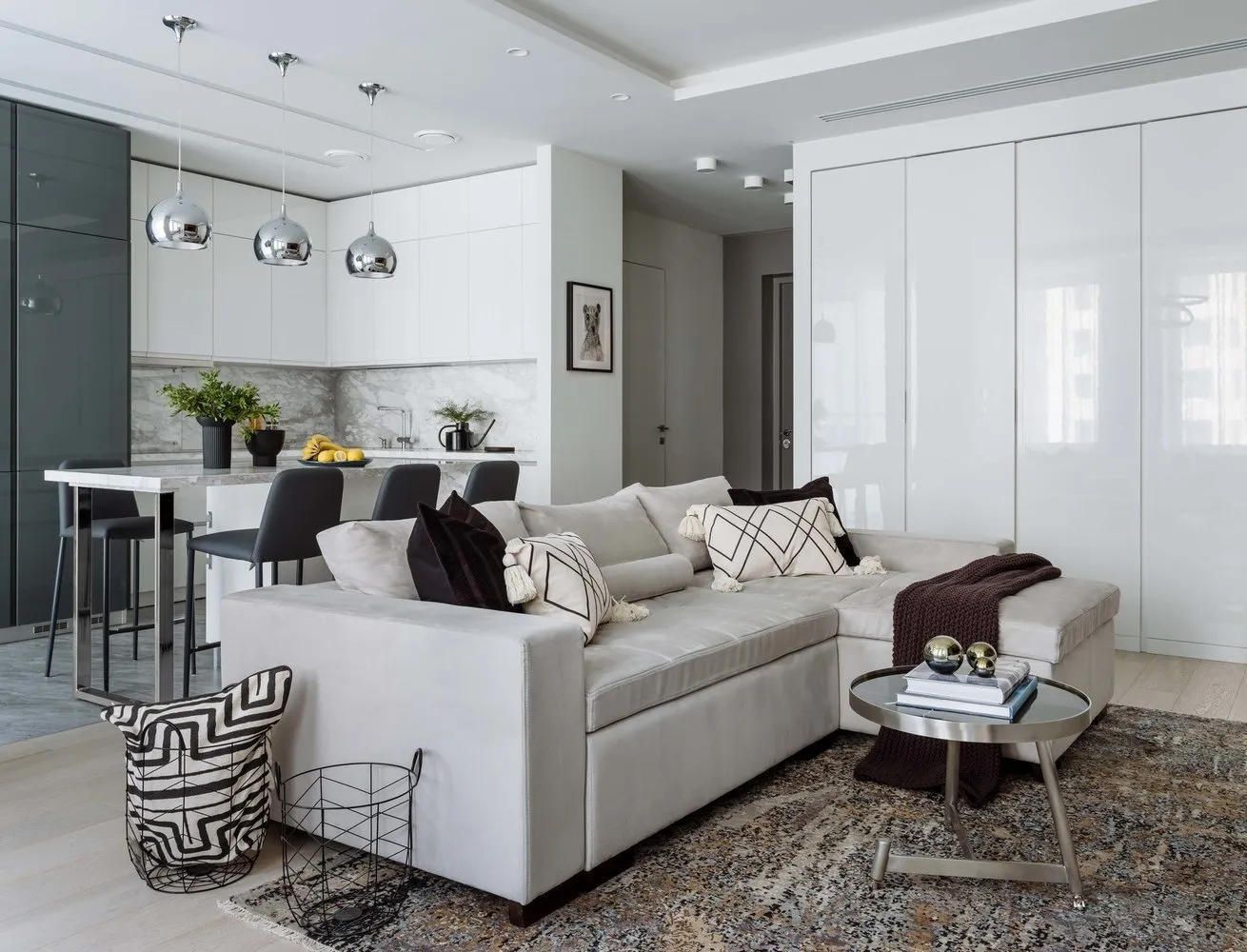
Design: "Design Bureau No. 9"
- combining the kitchen with a room if there is a gas stove. This is only possible with the installation of sliding or hinged doors;
- combining a balcony with a room (but combining it is possible with the installation of "French doors").

Design: Alexei Golub
What can be done in place of the bathroom:
- a storage room,
- a wardrobe,
- non-residential space (office).
When is apartment relocation justified
Relocation is considered in favor of the owner in two cases: if there is a non-residential space under your apartment or if there is an identical apartment above your floor with already legalized similar relocation.

Design: MAKEdesign
Naturally, the format of this article does not allow describing all types of permissions and restrictions for apartment relocations. If you have any questions or comments — describe them in the comments, and we will try to answer all of them.
On the cover: design project by IVA Design Bureau
More articles:
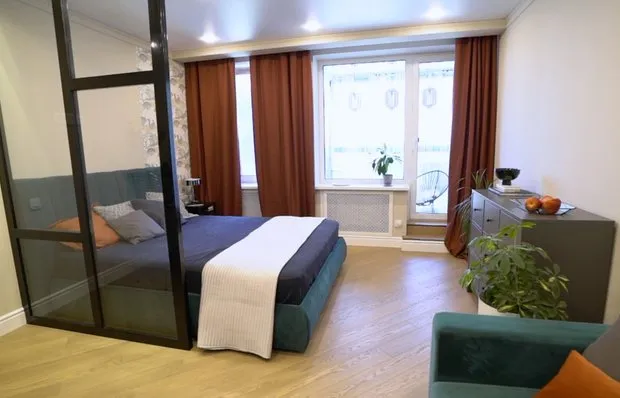 How to Arrange a Kitchen, Bedroom, and Living Room in a 33 m² Apartment?
How to Arrange a Kitchen, Bedroom, and Living Room in a 33 m² Apartment? Brick Walls, Loft Bed, and Balcony Room – Unusual Loft Design by Designer
Brick Walls, Loft Bed, and Balcony Room – Unusual Loft Design by Designer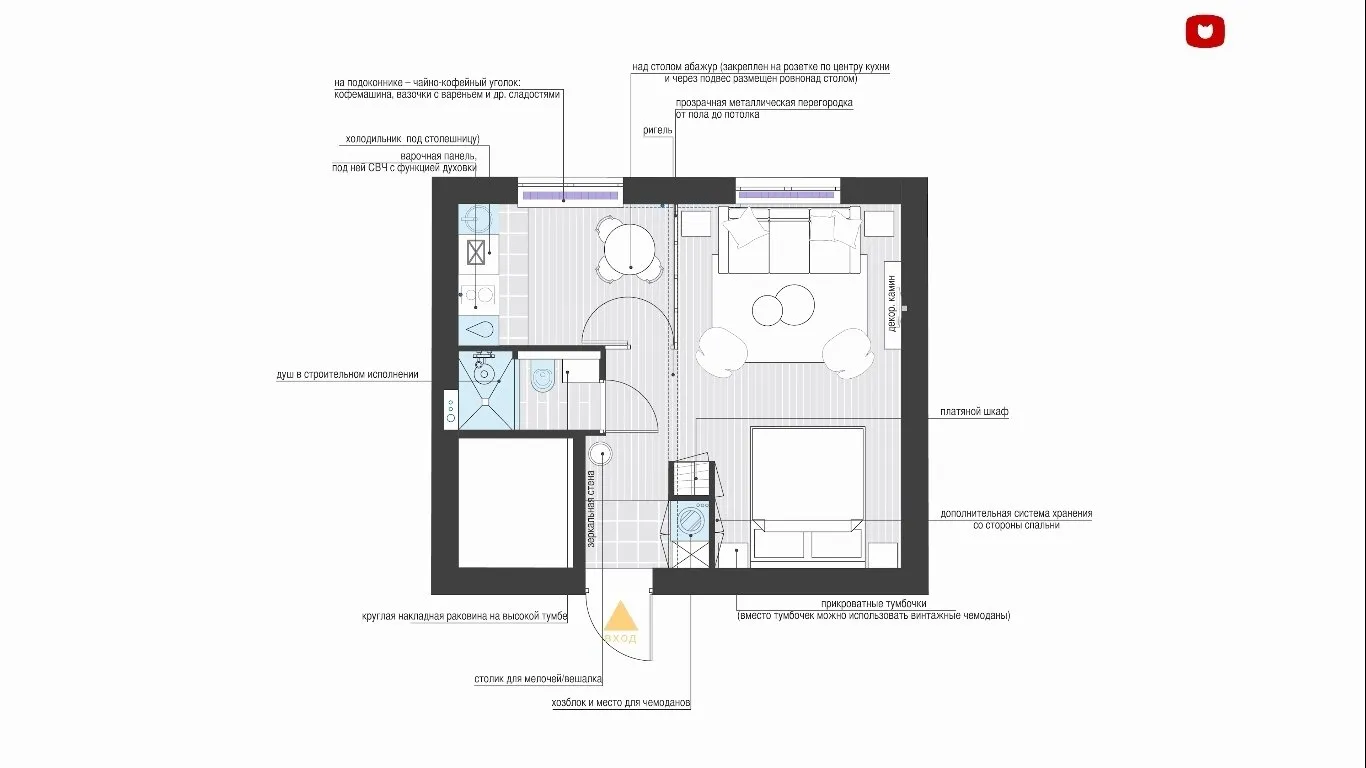 Studio 30 sqm with vibrant finishing and unconventional solutions
Studio 30 sqm with vibrant finishing and unconventional solutions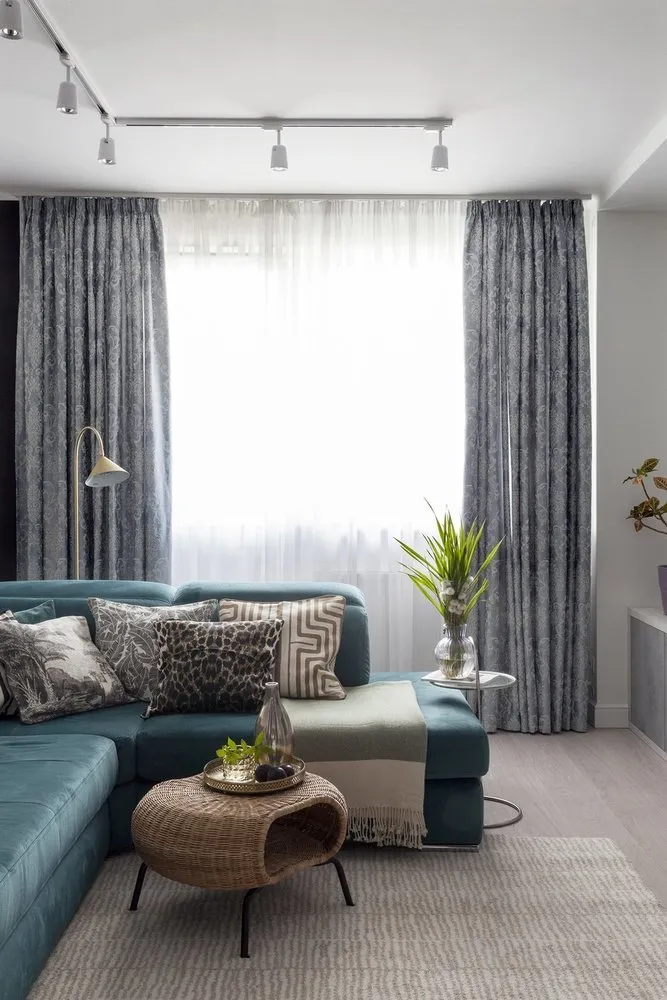 How to Incorporate IKEA Furniture into Designer Interiors?
How to Incorporate IKEA Furniture into Designer Interiors?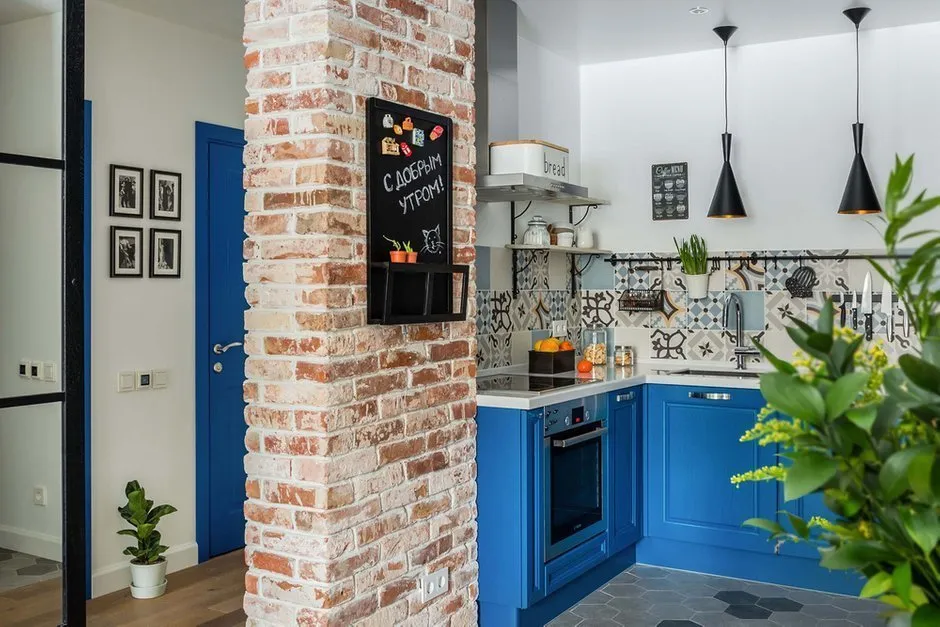 Kitchens in Corridors: Examples from Projects
Kitchens in Corridors: Examples from Projects 8 museums in the world you can visit online
8 museums in the world you can visit online Visually Expanding Bathroom Space: 7 Tips
Visually Expanding Bathroom Space: 7 Tips 10 Cool Items from IKEA's New Collection. They Are Not Only Beautiful But Also Useful
10 Cool Items from IKEA's New Collection. They Are Not Only Beautiful But Also Useful